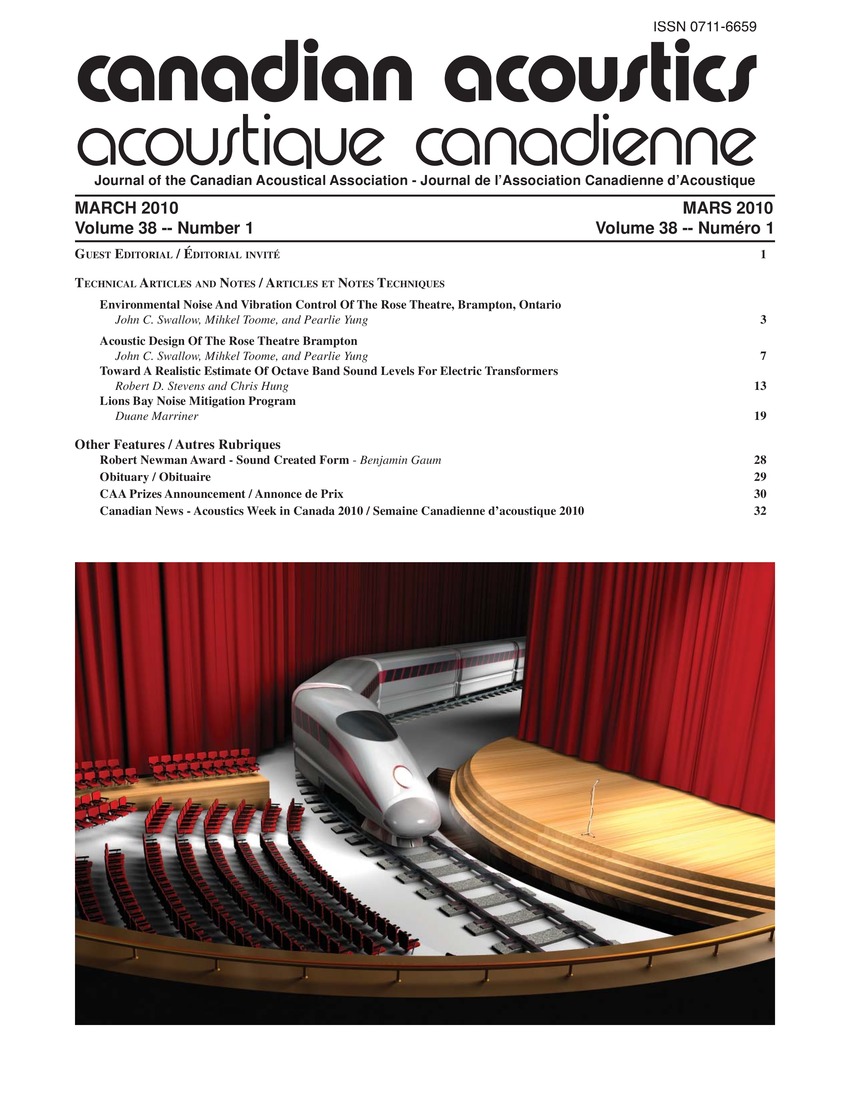Environmental noise and vibration control of the Rose Theatre, Brampton, Ontario
Keywords:
Concrete slabs, Garages (parking), Railroads, Theaters, Air-borne noise, Brampton, Design objectives, Environmental noise, Main railway line, Ontario, Pre-cast, Rail traffic, Roof slabs, Structural engineer, Underground parking, Vibrating surface, Vibration isolations, Vibration levelAbstract
The Rose Theatre in Brampton, Ontario was to be constructed twenty meters away from a CN main railway line (which includes commuter and freight rail traffic) and on top of a pre-existing underground parking garage which was to remain intact and in operation during the course of construction. A full concrete slab could not be supported by the pre-existing parking garage columns; therefore, a transfer grid, designed by the structural engineer, was employed and as a result a typical "room-within-a-room" construction could not be conventionally achieved. Railway airborne noise is controlled to meet the interior objective of RC 20 by providing a "floating" shell enveloping the entire building. Exterior concrete pre-cast panels are resiliently supported and resiliently connected back to the building and the entire roof slab was vibration isolated from the structure. For railway-induced vibration, the building was supported on a transfer grid which was in turn supported by 250 mm thick rubber vibration isolation pads. The entire building, including exterior shell, stairs and elevators is vibration isolated from ground-borne rail vibration. The measured vibration levels (and the noise radiated by vibrating surfaces) in the theatre were controlled to well within the design objective.Additional Files
Published
How to Cite
Issue
Section
License
Author Licensing Addendum
This Licensing Addendum ("Addendum") is entered into between the undersigned Author(s) and Canadian Acoustics journal published by the Canadian Acoustical Association (hereinafter referred to as the "Publisher"). The Author(s) and the Publisher agree as follows:
-
Retained Rights: The Author(s) retain(s) the following rights:
- The right to reproduce, distribute, and publicly display the Work on the Author's personal website or the website of the Author's institution.
- The right to use the Work in the Author's teaching activities and presentations.
- The right to include the Work in a compilation for the Author's personal use, not for sale.
-
Grant of License: The Author(s) grant(s) to the Publisher a worldwide exclusive license to publish, reproduce, distribute, and display the Work in Canadian Acoustics and any other formats and media deemed appropriate by the Publisher.
-
Attribution: The Publisher agrees to include proper attribution to the Author(s) in all publications and reproductions of the Work.
-
No Conflict: This Addendum is intended to be in harmony with, and not in conflict with, the terms and conditions of the original agreement entered into between the Author(s) and the Publisher.
-
Copyright Clause: Copyright on articles is held by the Author(s). The corresponding Author has the right to grant on behalf of all Authors and does grant on behalf of all Authors, a worldwide exclusive license to the Publisher and its licensees in perpetuity, in all forms, formats, and media (whether known now or created in the future), including but not limited to the rights to publish, reproduce, distribute, display, store, translate, create adaptations, reprints, include within collections, and create summaries, extracts, and/or abstracts of the Contribution.


